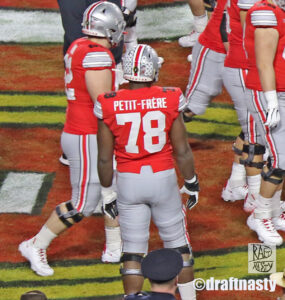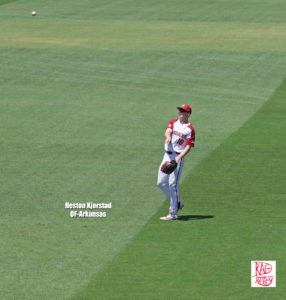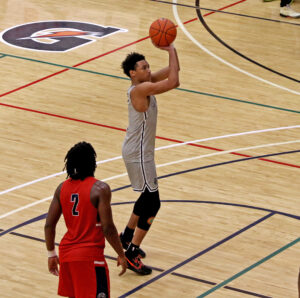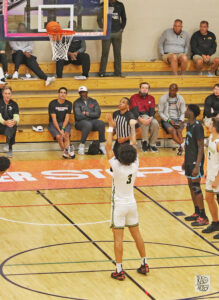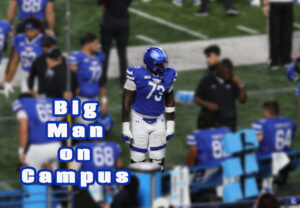When It Comes Down to Seconds
7 min readSometimes the first round is fulfilling enough. In other cases, one might welcome seconds. For National Basketball Association teams, it’s not often greed that brings them back to the table after the initial round of the NBA Draft; in most cases, it’s a necessity. Clemson F Trevor Booker (pictured above) is just one of many NBA draft hopefuls later tonight that hope this sentiment has validity.
When the NBA Draft takes place on Thursday evening at 7 p.m. in New York’s Madison Square Garden, history has shown us that it would be wise to stay tuned well after the first round concludes and the camera bulbs stop flashing.
Up to this point, three phases of the Draft have garnered considerable attention. This is no surprise nor is it ill-awarded. The top pick crowns the discussion. Unfortunately, little mystery is generally left in that debate leading up to Draft night. The lottery pot captures the next phase and the mid to late first round the last.
There is considerable energy given to these posts. After all, here is where one gets his Tim Duncan (1st overall pick in 1997), his Brook Lopez (10th overall pick in 2008), or his David Lee (30th overall pick in 2005). It’s safe to say that San Antonio, New Jersey, and New York, are as satisfied with their picks in 2010 as they were when they made them.
But the first round won’t always provide one with a player that will help bring his team and city four NBA titles or provide some glimmer of hope and excitement to a team that lacks any immediate prosperity. Because the first round is also where one gets his Greg Oden (1st overall pick in 2007), his Michael Sweetney (9th overall pick in 2003), and his Erick Barkley (28th overall pick in 2000), players who, for a variety of reasons, don’t end up helping to propel the teams that drafted them.
On Thursday night, the second round selections won’t generate the fanfare that their first round counterparts do, and on Friday morning, they won’t receive the front page headlines. But years from now, some of them perhaps may end up as celebrated sports figures while those that superseded them become barely faint memories, existing more as historical data than present day ball players.
There is a very practical reason for players to jockey for first round position. In a nugget, first round contracts are guaranteed and second round’s are not.
Outside of that, it’s merely texture. Prospects, of course, marvel at status and none likely would welcome openly a second round position if a first round spot could be granted. However, if a current prospect could paint a pattern of his NBA future, which wouldn’t in some way design it after Rashard Lewis, Manu Ginobli, Michael Redd, Gilbert Arenas, or Carlos Boozer’s career thus far?
It’s not the argument here that a prospect would aspire to Arenas’ off court troubles or Ginobli and Redd’s recent injury-plagued seasons. The sentiment is that each of the aforementioned products currently holds air in the discussions regarding the top tier players at their respective positions.
In fact, this summer Boozer will be one of the most sought after free agents in the league. Moreover, it’s impossible to mention the words sharp shooter in the NBA and not have Redd or Arenas in the conversation. And notably, Ginobli was a staple on San Antonio’s championship teams and Lewis is a major reason why Orlando has gone deep into the playoffs the last two seasons.
Yet, they were all drafted through the back door.
In the second round, Lewis was the 32nd pick in 1998, Ginobli 57th in 1999, Redd 43rd in 2000, Arenas 31st in 2001, and Boozer 34th in 2002.
Knowing this should factor into a Draft hopeful’s approach to Thursday night and beyond. Knowing this should impact the way fans approach Thursday night as well.
On Draft night in 1999, Spurs fans were probably asleep by the time Ginobli was picked up. Instead, they celebrated San Antonio’s first round selection earlier that evening, Leon Smith, who was taken with the 29th pick out of Martin Luther King High School. Today, most people don’t even remember Smith and that he played in just 15 NBA games and averaged 2.2 points per contest in the process.
They do know Ginobli’s body of work, however. Since joining the Spurs in 2002, the Argentine has averaged 15 points per game, four rebounds and four assists for his career, made the all-star team once, and helped lead San Antonio to three NBA titles. And in the playoffs, where most players’ games disappear, is where the lefty guard has excelled, pouring in 16 points per game and pulling down nearly five rebounds a contest. Ginobli’s presence in the sport is international, as he led his Argentina national team to a 2004 gold medal finish in the Athens Olympic Games.
Basketball fans remember this. They don’t remember that Ginobli was the next-to-last player taken in the Draft (There were only 58 picks in 1999.)
This story parallels beyond Ginboli. Redd watched Milwaukee take center Jason Collier in the first round before him and Boozer saw Cleveland nab Dejuan Wagner. Collier was having a mediocre NBA career before his unfortunate death in 2005 and Wagner fizzled out of the league with several season crippling injuries.
All Redd has done is average 20 points per game in his nine year career, marking him as one of the most lethal shooters from behind the arc in the league’s recent history. Boozer, touted as a premiere power forward, has averaged a career double-double at 17 points and 10 rebounds a contest. In four postseasons with Utah, the Duke standout has been even better, pumping in 20 points per game to compliment a whopping 12 rebounds.
Lewis and Arenas have been explosive at times as well. Lewis, a 6-10 shooting forward, has made the all-star team twice, and has averaged nearly 17 points and six rebounds per game for his career, spent early with Seattle and presently with Orlando. And after two seasons in Golden State, Arenas rose into NBA stardom with Washington, and has posted monstrous numbers for his career, at 22 points per contest with nearly six assists.
Each of these players has made an all-star team at least once, has been pivotal in his team making the playoffs, and more than anything, has consistently improved through each NBA season.
They have proven that one doesn’t need to be a lottery choice to have success in the league and eventually get his number retired as shooting guard Jeff Hornacek did after 15 playing seasons, two in which he helped lead Utah to the NBA Finals. When Hornacek was a starter for the Jazz averaging 14 points per game facing off with Michael Jordan and the Chicago Bulls in 1997 for the championship, no one cared that he was a 46th overall pick.
It would be all too easy to point the finger at NBA executives, but the truth is they don’t always get it wrong. It would be difficult to argue that Boozer was going to be a better pro than Drew Gooden who was taken with the fourth overall pick in the same Draft or that Ginobli would be leaps and bounds better at shooting guard than the 20th overall selection Dion Glover.
Yes, it’s easy to call the card once it’s been shown, so those who voice adamantly that it was evident how these careers would play out are simply showmen.
It is fair to say that in some instances the decision makers get it wrong, and sometimes really wrong. But in other cases, perhaps players are drafted where they should be, and in the process of preparing themselves for their NBA careers, they challenge themselves to become better and through training thus do.
It’s anyone’s guess who this year’s breakout player will be, because as stated, the cards with the 2010 class are face down.
Some players do spark intrigue as candidates. Clemson’s Trevor Booker is one. As an undersized 6-7 power forward, the South Carolina native will likely go in the middle of the second round. However, the former Tiger demonstrated the athleticism and passion in college that may translate well to the pro game. In four years at Clemson, Booker averaged 13 points and eight rebounds per game.
Alabama’s Mikhail Torrance is a unique prospect as well. At 6-5, the Crimson Tide product can play both guard positions well, something he did while at Alabama. Equally, Torrance has a nice touch from the perimeter and can also drive, elevate and finish at the rim. Interestingly enough, he dribbles primarily with his left hand and shoots with his right. In 32 games last season, the junior averaged 15 points, shooting 47 percent from the field, and dished out 5 assists.
While Booker and Torrance evoke images of promising NBA futures, there are dozens of others who might eventually fit the bill. They won’t be seated at a table near the podium, or be interviewed in the Green Room, or have an opportunity to shake Commissioner David Stern’s hand. In fact, most of them won’t even be in the building when their names are called.
But that won’t matter. A second rounder isn’t sentenced to obscurity but for one night. After that, he controls his longevity and his legacy. Because essentially, the NBA Draft decides how you go in; it doesn’t determine where you come out.
Patrick Green, DraftNasty.com staff writer, has been writing professionally for more than a decade. He is the author of two novels, Josie’s Missing Syllabus and Son Down; and while both works deal with topics beyond the athletic landscape, each exposes a social scope involving sports as an underlying theme. Green has covered high school, college, amateur, and professional football during his career, having written for newspapers in Augusta, Ga., and Charleston, South Carolina. To learn more about Patrick Green, visit www.greeninkpub.com.
